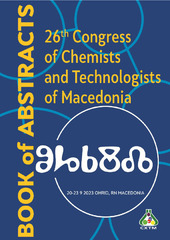Приказ основних података о документу
Testing The Quality of White and Green Leaf Proteins Using Mixolabtm for Applications in Bakery Products Formulations
| dc.creator | Šekuljica, Nataša | |
| dc.creator | Mijalković, Jelena | |
| dc.creator | Jakovetić Tanasković, Sonja | |
| dc.creator | Korićanac, Marija | |
| dc.creator | Gazikalović, Ivana | |
| dc.creator | Knežević-Jugović, Zorica | |
| dc.date.accessioned | 2023-12-25T09:20:07Z | |
| dc.date.available | 2023-12-25T09:20:07Z | |
| dc.date.issued | 2023 | |
| dc.identifier.isbn | 978-9989-760-19-8 | |
| dc.identifier.uri | http://TechnoRep.tmf.bg.ac.rs/handle/123456789/7020 | |
| dc.description.abstract | Incorporation of alternative plant protein concentrates or isolates into cereal-based matrices can lead to the production of nutritionally improved products such as bread with high protein content and an improved essential amino acid profile, especially lysine. Green leaves, as the richest protein source containing soluble – white and insoluble – green proteins, seem to be an attractive and sustainable source for obtaining alternative proteins in line with the concept of green biorefinery, compared to the cultivation of soybeans for protein production. Thus, the overall objective of this study was to evaluate the quality of white and green proteins from various leaf sources for inclusion in a library of alternative proteins and for use in the development of plant protein-based products. A food-grade, sustainable three-step process was used to produce the protein concentrate from the pumpkin and spinach leaves, including mechanical pressing of the leaves with screw presses, thermal coagulation, and acid precipitation. The functional properties of the white and green protein concentrates, such as solubility, emulsifying activity/stability, and water/oil holding capacity, were investigated. The rheological behaviour of wheat flour enriched with leaf protein was studied using the Mixolab Chopin. The functional properties of the leaf protein concentrates, as well as, the rheological properties of the leaf protein-enriched flour were compared with a soy protein concentrate that served as a reference. The leaf protein concentrates showed comparable or better functional properties than the currently used soy protein concentrates. The changes in the rheological behaviour were observed in terms of water absorption, development and stability time, mechanical resistance during mixing, and behaviour of the protein-enriched flour during heating. This study has shown that leaf protein has the potential for the production of leaf protein-rich baked goods. | sr |
| dc.language.iso | en | sr |
| dc.publisher | Skopje : Society of chemists and technologists of Macedonia | sr |
| dc.relation | info:eu-repo/grantAgreement/ScienceFundRS/Ideje/7751519/RS// | sr |
| dc.rights | openAccess | sr |
| dc.rights.uri | https://creativecommons.org/licenses/by/4.0/ | |
| dc.source | Book of abstracts / 26th Congress of SCTM with international participation 20–23 September 2023 Metropol Lake Resort Ohrid, R. Macedonia | sr |
| dc.subject | Pumpkin leaves | sr |
| dc.subject | spinach leaves | sr |
| dc.subject | white and green leaf protein | sr |
| dc.subject | functional properties | sr |
| dc.subject | rheological properties of protein-enriched flour | sr |
| dc.subject | MixolabTM | sr |
| dc.title | Testing The Quality of White and Green Leaf Proteins Using Mixolabtm for Applications in Bakery Products Formulations | sr |
| dc.type | conferenceObject | sr |
| dc.rights.license | BY | sr |
| dc.citation.spage | 148 | |
| dc.identifier.fulltext | http://TechnoRep.tmf.bg.ac.rs/bitstream/id/19227/bitstream_19227.pdf | |
| dc.identifier.rcub | https://hdl.handle.net/21.15107/rcub_technorep_7020 | |
| dc.type.version | publishedVersion | sr |

